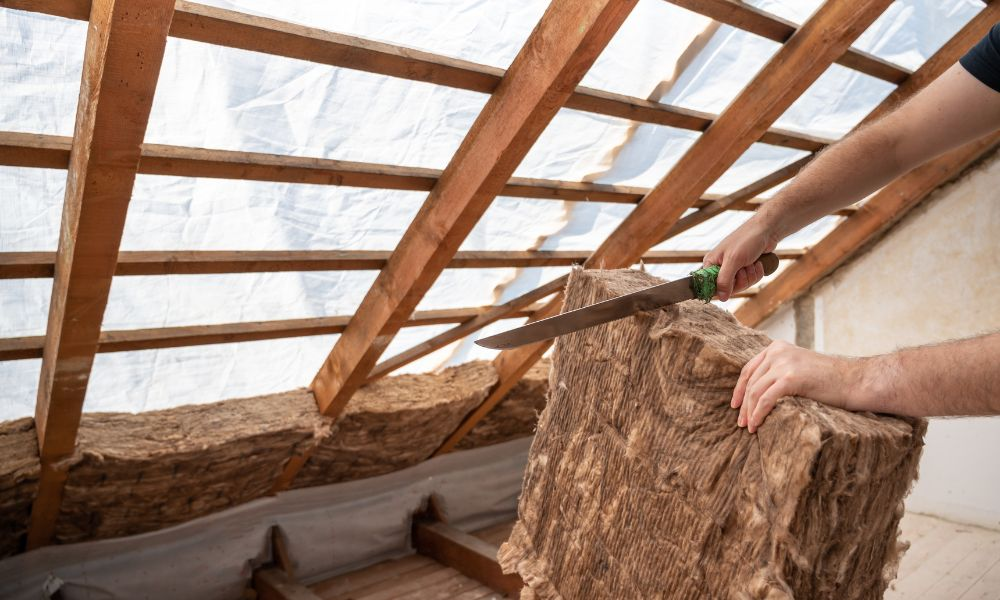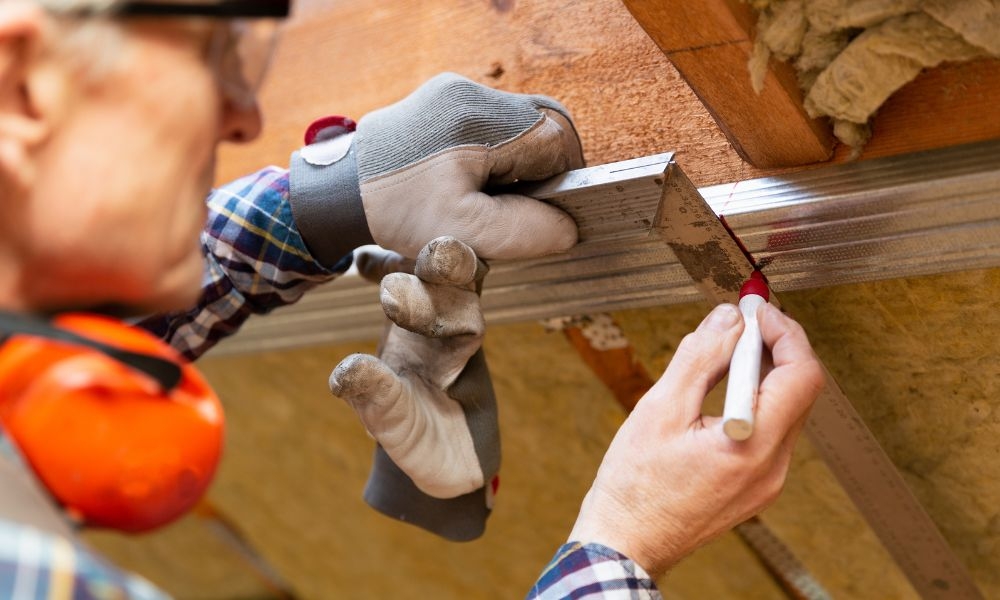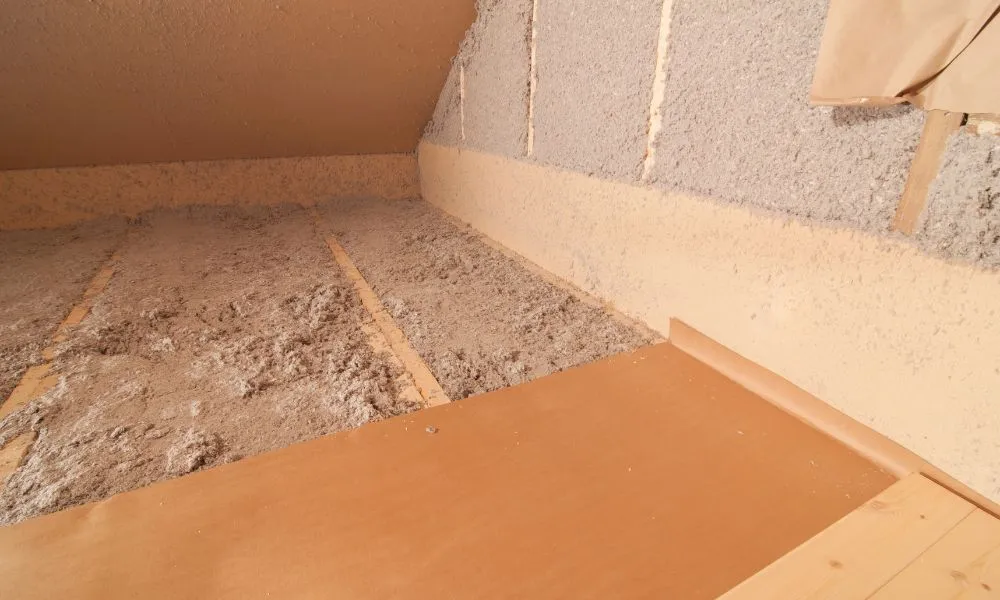Types Of Attic Insulation: Choosing The Right Fit For Your Home
Discover The Various Types Of Attic Insulation, Their Benefits, And How To Choose The Right One For Your Home. Learn About Blanket, Loose-Fill, Spray Foam, Reflective, And Rigid Foam Insulation.
- Understanding Attic Insulation
- Common Terms and Concepts in Attic Insulation
- Types of Attic Insulation
- Blanket Insulation
- Loose-Fill Insulation
- Spray Foam Insulation
- Reflective or Radiant Barrier Insulation
- Rigid Foam Insulation
- Comparing Different Types of Insulation
- Insulation R-Values Explained
- Cost Comparison
- Performance and Longevity
- Environmental Impact
- Factors to Consider When Choosing Attic Insulation
- Insulation Installation Methods
- Maintenance and Upkeep of Attic Insulation
- Benefits of Proper Attic Insulation
- Conclusion
Discover the various types of attic insulation, their benefits, and how to choose the right one for your home. Learn about blanket, loose-fill, spray foam, reflective, and rigid foam insulation.
Are you thinking how you can make your home more comfortable and save on energy bills? Proper attic insulation is the key. Ensuring your attic is well-insulated is crucial for maintaining a comfortable, energy-efficient home. Properly insulating your attic can provide many benefits
beyond keeping your house warm in the winter and cool in the summer.
Attic insulation significantly boosts energy efficiency. A well-insulated attic helps regulate your home's temperature, reducing the need for excessive heating and cooling. This not only lowers your utility bills but also lessens your environmental footprint. Proper insulation enhances indoor comfort by maintaining a consistent temperature throughout your home, eliminating pesky drafts and cold spots.
Investing in good attic insulation can lead to substantial cost savings over time. While the initial expense might seem high, the reduction in energy bills and the potential increase in your home's value make it a wise financial decision. Plus, you might qualify for energy efficiency tax credits and rebates, further offsetting the initial costs.
Understanding Attic Insulation
Attic insulation is a material used to reduce heat transfer between your attic and the rest of your home. It acts as a barrier, keeping the warmth inside during the winter and the heat out during the summer. It works by trapping air within its structure, reducing the heat transfer rate. Different materials have varying levels of effectiveness, measured by their R-value, which indicates the insulation’s resistance to heat flow. The higher the R-value, the better the insulation performs. Insulation can be installed in various forms, including batts, rolls, loose-fill, spray foam, and rigid boards, each offering unique benefits and installation methods.
Common Terms and Concepts in Attic Insulation
R-Value: This term measures the thermal resistance of insulation material. A higher R-value indicates better insulating properties.
Thermal Bridging: This occurs when heat bypasses the insulation through a more conductive material, such as wood or metal, reducing overall efficiency.
Air Sealing: The process of closing gaps and cracks in the attic to prevent air leaks, which complements the insulation’s effectiveness.
Vapor Barrier: A material that resists moisture diffusion, preventing condensation and mold growth within the insulation.
Blown-In Insulation: Loose-fill insulation that is blown into place, providing a flexible and effective coverage, especially in hard-to-reach areas.
Batt Insulation: Pre-cut sections of insulation that fit between the framing of walls and ceilings, commonly made of fiberglass or mineral wool.
Understanding these concepts can help you make informed decisions about the types of attic insulation that best suit your home’s needs.

Types of Attic Insulation
Choosing the right type of insulation for your attic is vital for maximizing energy efficiency and comfort in your home. Each attic insulation type has unique properties, benefits, and best-use scenarios.
Blanket Insulation
Blanket insulation is a popular choice for attics. It consists of large rolls or batts that fit snugly between studs, joists, and beams. There are two main forms: batts and rolls. Batts are pre-cut sections, while rolls are continuous lengths that can be cut to size. Common materials include fiberglass, mineral wool, and cotton, each offering varying degrees of thermal resistance and fire protection. Pros include ease of installation, affordability, and availability. However, potential gaps and lower effectiveness in irregular spaces are some cons. For optimal performance, ensure the insulation fits tightly without compressing, and seal any gaps or cracks to prevent air leaks.
Loose-Fill Insulation
Loose-fill insulation is made up of small particles that are blown into the attic space. It offers exceptional coverage, particularly in difficult-to-access areas. The primary materials utilized are cellulose, fiberglass, and mineral wool, each providing varying levels of insulation and fire resistance. Its advantages include adaptability in coverage and effective performance in irregular spaces. However, potential drawbacks may involve settling over time and the potential requirement for professional installation. Achieving even and thorough coverage is best accomplished by using specialized blowing equipment, ensuring no gaps or voids are left unattended.
Spray Foam Insulation
Spray foam insulation is a versatile and highly effective method. Liquid foam is sprayed into the attic, expanding to fill gaps and create an airtight seal. There are two types: open-cell, which is less dense and more flexible, and closed-cell, which is denser and provides a higher R-value. The pros include superior air sealing and high R-value. The cons are higher costs and the need for professional installation. Ensure professional application to avoid issues like overexpansion or off-gassing, and use the appropriate type of foam for your specific needs.
Reflective or Radiant Barrier Insulation
Reflective insulation, also known as radiant barrier insulation, functions by reflecting radiant heat away from living spaces, making it well-suited for hot weather. It uses reflective materials to bounce heat back, preventing it from entering the home and thus reducing cooling costs. Common materials include foil-faced paper, plastic film, and cardboard, which are lightweight and easy to install. Pros include excellent performance in hot climates and ease of installation. Cons are limited effectiveness in cold climates and potential degradation over time. Install the reflective material facing the air space, ensuring it remains clean and dust-free to maintain its reflective properties.
Rigid Foam Insulation
Rigid foam insulation consists of firm panels with high thermal resistance, which is ideal for insulating attics, especially those with space constraints. The main types are polyisocyanurate, extruded polystyrene (XPS), and expanded polystyrene (EPS), each offering different insulation levels and moisture resistance. Pros include high R-values and resistance to moisture. However, they may be more costly and challenging to fit into irregular spaces. Cut the panels to fit snugly between rafters or over the attic floor, and seal all joints with appropriate tape or sealant to prevent air leaks.
Comparing Different Types of Insulation
When selecting insulation, it's important to find the perfect balance between performance, cost-effectiveness, durability, and environmental impact that aligns with your unique needs and priorities.
Insulation R-Values Explained
R-value measures an insulation material’s resistance to heat flow, with higher values indicating better insulating properties. For attics, the recommended R-value typically ranges from R-30 to R-60, depending on your climate zone. Each type of insulation such as blanket, loose-fill, spray foam, reflective, and rigid foam has its own R-value range. Understanding these values helps you choose the most effective insulation for your needs, ensuring optimal energy efficiency and comfort in your home.
Cost Comparison
The attic insulation cost varies widely depending on the type and material used. Blanket insulation (batts and rolls) is generally the most affordable, making it a popular choice for DIY projects. Loose-fill insulation tends to be moderately priced but may require professional installation. Spray foam insulation is on the higher end of the cost spectrum due to its superior air sealing and high R-value. Reflective or radiant barrier insulation and rigid foam insulation fall in between, offering specific advantages that justify their costs. Considering both initial installation expenses and long-term energy savings is crucial when comparing costs.
Performance and Longevity
Different types of insulation offer varying levels of performance and longevity. Spray foam insulation excels in both categories, providing excellent air sealing, high R-values, and a lifespan of several decades if installed correctly. Loose-fill and blanket insulation also performs well, especially when properly installed and maintained, but may settle or compress over time, reducing effectiveness. Rigid foam insulation is durable and moisture-resistant, making it a long-lasting option. Reflective insulation performs best in hot climates but may degrade faster if not kept clean and intact.
Environmental Impact
The environmental impact of insulation materials is an important consideration. Cellulose insulation, made from recycled paper, is one of the most eco-friendly options available. Fiberglass and mineral wool, used in both blanket and loose-fill forms, are also considered relatively sustainable, especially when they include recycled content. While highly effective, spray foam insulation typically has a higher environmental impact due to the chemicals used in its production. Reflective insulation materials like foil-faced paper and plastic film have a moderate environmental footprint. Rigid foam insulation can vary, with some types being more environmentally friendly than others based on their manufacturing process and material composition.

Factors to Consider When Choosing Attic Insulation
When selecting the best attic insulation, climate and regional considerations play a significant role. In colder climates, you'll need insulation with a higher R-value to keep your home warm, whereas in warmer regions, insulation that reflects heat and maintains a cooler indoor temperature is more effective. Your attic's design and structure can influence the type of insulation you choose. For example, attics with irregular spaces or limited access might benefit from loose-fill or spray foam insulation, which can reach those tight areas better than batts or rolls.
Budget constraints are another crucial factor. While some insulation types, like blanket insulation, are more budget-friendly and suitable for DIY projects, others, like spray foam, may require a higher initial investment but offer superior performance and long-term savings. Deciding between DIY and professional installation is also important. DIY installations can save money, but professional installation ensures proper coverage and maximizes efficiency, especially for complex insulation types like spray foam. Balancing these factors helps you choose the most effective and economical insulation for your attic.
Insulation Installation Methods
Installing attic insulation can be done as a DIY project or by professionals. If you choose to do it yourself, start by measuring your attic and selecting the right insulation. Then, clear the attic, seal any air leaks, and place the insulation evenly, avoiding compression. It's important to wear gloves, masks, and goggles for protection.
Professional installation is efficient and ideal for complex insulation types like spray foam or blown-in insulation. Professionals will assess your attic, recommend the best type of insulation, and handle the entire process. Use protective gear, ensure good ventilation, and be cautious of electrical wiring. Proper insulation installation will improve your home’s energy efficiency and comfort, whether you do it yourself or hire professionals.
Maintenance and Upkeep of Attic Insulation
Regular maintenance of attic insulation is essential to ensure it continues to perform effectively. Begin with periodic inspections, ideally twice a year, to check for signs of damage, moisture, or pest infestations. Common issues include settling, compression, and gaps, which can reduce insulation efficiency. If you notice any of these problems, promptly address them by adding more insulation or sealing leaks. Moisture can lead to mold growth, so it's crucial to identify and repair any roof leaks or ventilation problems. Consider reinsulating your attic if your current insulation is old, damaged, or if your energy bills are increasing without a clear reason. Upgrading to more efficient insulation can significantly enhance your home's comfort and energy savings.
Benefits of Proper Attic Insulation
Proper attic insulation improves energy efficiency, leading to lower utility bills. Maintaining a stable indoor temperature enhances comfort throughout your home. Good insulation can also increase your home's value by making it more attractive to buyers. Environmentally, it reduces energy consumption, contributing to a greener planet. Investing in quality attic insulation pays off in terms of savings, comfort, home value, and environmental impact.
Conclusion
When choosing the right insulation for your attic, consider factors like your local climate, the specific design of your attic, and your budget. Each type of insulation has its own strengths: blanket insulation is affordable and easy to install, loose-fill works well for hard-to-reach areas, spray foam offers superior air sealing, reflective insulation is excellent for hot climates, and rigid foam provides high R-values and moisture resistance. Balancing these factors with your long-term goals for energy efficiency, comfort, and environmental impact will guide you to the best choice. Investing in the right insulation can lead to significant savings, increased home comfort, and a positive environmental contribution.

